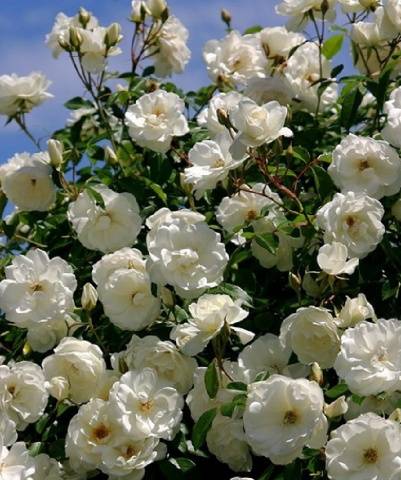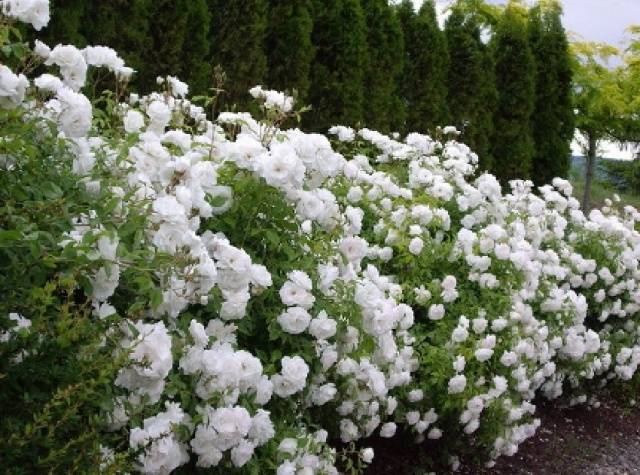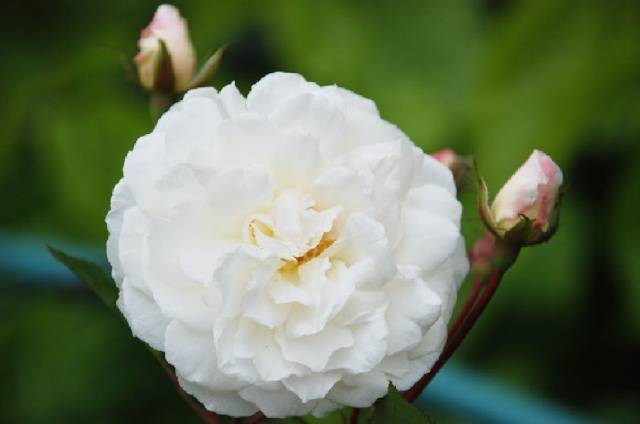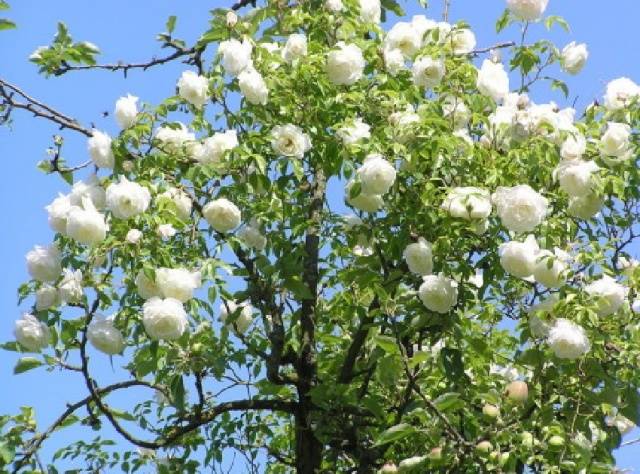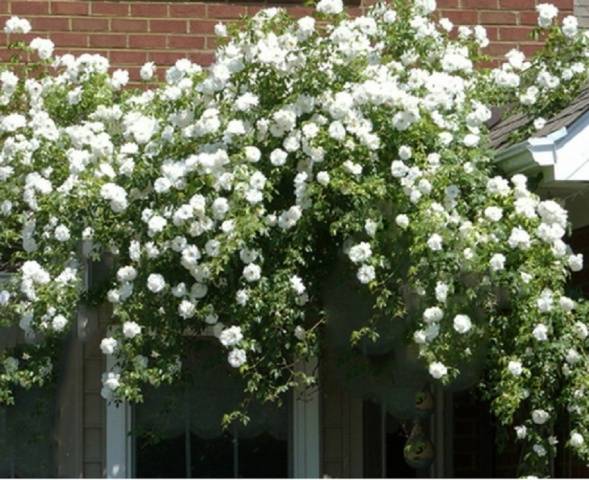Content
Among the flowers grown by summer residents on their plots, there is one species that does not leave anyone indifferent. These are roses. The nobility of the queen of the garden is not only mesmerizing, but also makes it possible to create amazing designs. Flower growers - amateurs especially prefer the "Iceberg" climbing rose variety.
This is one of the most reliable and beautiful varieties. It is a renal mutation of white floribunda roses... Is different:
- Abundant and long flowering. With its help, you can create a unique design for the whole season on the wall, arch, in single plantings.
- The ability to re-bloom. If you remove faded inflorescences in time, then in the fall you can admire the beautiful flowers again.
- The original structure of the flower and the color of the foliage. Leaves are light green in color with a characteristic shine, cupped flowers, double.
- Weak aroma. You can say almost no smell.
- Rapid growth. In a short time, it is able to close an unsightly wall or facade on the site.
Climbing rose varieties "Iceberg" is not grown for cutting, it gives expressiveness to the floral design of the site.
Perfect for landscaping squares, parks, streets. Even in the curb version, it is used very often. This is due to her:
- unpretentiousness;
- winter hardiness;
- long flowering period.
It shows itself well when grown on a trunk. The variety is grafted at a height of 100-120 cm, and the crown is formed in the form of a ball, the optimal diameter of which is about 60 cm.
What does the "Iceberg" rose look like on the site
A description of any kind of rose, of course, begins with flowers.
They are classic white in color with a cream or yellowish center, but when it is cool in summer, they acquire a pink tint. Semi-double, one about 9 cm in diameter, 2-3 flowers on one peduncle.
The bush is medium, its height is from one meter to one and a half, the shoots are light green. "Iceberg" blooms for a long time and continuously. The arrangement of flowers resembles folio or hybrid tea types of roses. It is a subgroup of climbing roses. The variety is very popular. Despite the exactingness of growing conditions, this species is in great demand.
Growing a climbing beauty
In order for the Iceberg rose to please with its beautiful flowering, it is necessary to fulfill some requirements for growing the variety. She loves:
- sunlight;
- soil - light, rich in humus, drained;
- humidity - moderate;
- wind protection.
If you plan to plant a rose garden, then you will have to cultivate the soil to a depth of about 40 cm. But for a single planting of a rose "Iceberg", they dig a hole. Its depth should be about a meter, and its diameter should be 65 cm. Then a soil mixture consisting of humus, sand and turf soil is placed in the pit (1: 2: 1). The white rose "Iceberg" responds well to the addition of wood ash (bucket) or complex mineral fertilizer (150 g) when planting. Suitable measures should be taken for different soils. Clay - loosened with sand and enriched with humus. Sandy - drained with sawdust or compost.
This will not affect the development of the flower very well.
Also, a lack of sunlight or gusts of wind will lead to a decrease in the quantity and quality of flowers.
Planting a rose of the "Iceberg" variety can be started as soon as the snow melts and the ground warms up a little. The best date is April. 3-4 hours before the scheduled planting time, the seedlings are soaked in water. This makes it easier for the plant to transfer the planting. When planting a rose of the "Iceberg" variety, you need to prune. Roots longer than 30 cm and excess shoots are removed.There should be no more than four of them on the bush.
How to care
Caring for a beautiful rose provides for compliance with the requirements of agricultural technology. The peculiarities of the development of a rose of the Climbing Iceberg variety are that its root system must have sufficiently small roots. This increases the amount of liquid absorbed from the soil. Therefore, do not forget that the abundance of flowers and the health of the bush depends on nutrition and watering.
- Watering. Water the rose correctly at the root, avoiding water getting on the crown. The regularity of watering is maintained in such a rhythm as to prevent the soil from drying out. The water is slightly warmed up so that its temperature is slightly higher than the environment. An adult bush requires less attention than a young one.
- Food. Organic matter is introduced as mulch and is gradually embedded in the near-stem circle. Rosa Iceberg responds well to the introduction of humus, composts, ventilated peat. In the fall, it is advisable to renew the mulch layer to provide warmth to the roots for the winter.
- Top dressing. At the beginning of summer, 2 dressings are carried out with a complex mineral fertilizer or ammonium nitrate. Nettle infusion can replace these compounds (2 buckets of grass per 200 liters of water).
- Preparing for winter. Lies in the shelter of the Iceberg rose bushes. Its shoots are flexible, easily pinned to the ground. Then cover them well with spruce paws. In the spring, the shelter is removed and the soil is loosened.
- Pruning. Carried out in autumn or spring. If the bush was cut in the fall, then in the spring this procedure is skipped. When pruning, shoots older than three years are gradually removed onto the ring, leaving only one or two years old. Last year's increments are shortened by 3 buds.
It is very easy for a rose bush to set the right direction, which is why the Iceberg variety is so prized in landscape design. Photos of compositions with climbing roses are very expressive.
Testimonials
Florists' reviews of the Iceberg variety are very good. Even novice amateurs do an excellent job of caring for this beauty. For those who love unpretentious white roses, this is the most suitable option.
